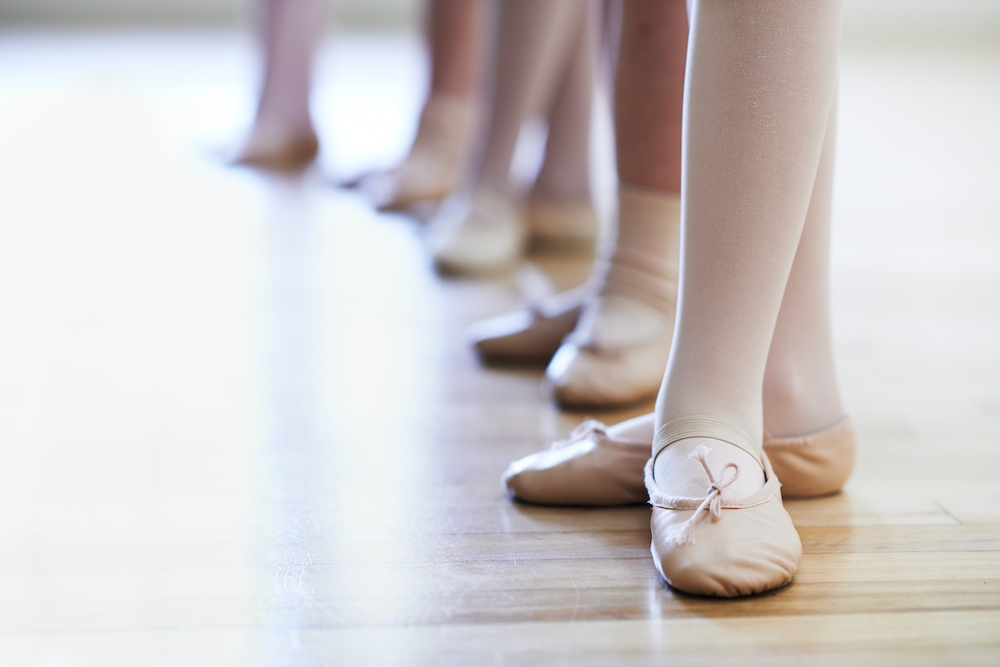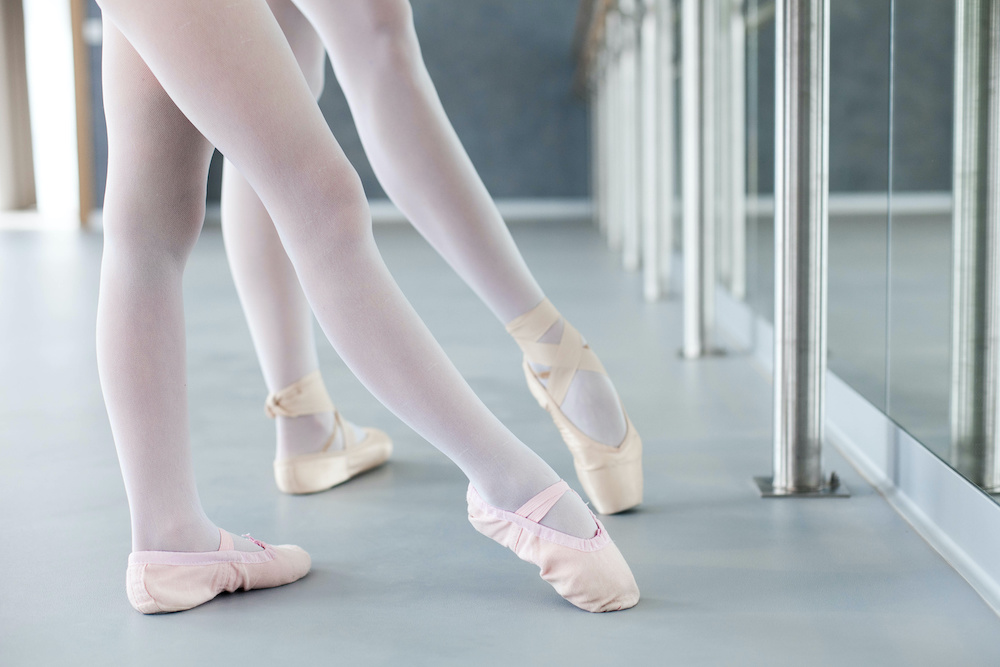How Much Are Ballet Shoes?
We may earn a commission for purchases using our links. As an Amazon Associate, we earn from qualifying purchases.
Ballet is a form of dance that has been around for many years.
Until now, little boys and girls are still in awe of it and dream of becoming ballet dancers someday.
Many parents dress their toddlers as little ballerinas and even adults are learning to dance ballet.
From their flowy costumes down to their dainty ballet shoes, who wouldn’t be fascinated with how elegant they look?
Most ballerinas know that they need to spend a small fortune on these fine-looking shoes. But how much are ballet shoes worth?
How Much Are Ballet Shoes?
Ballet shoes come with different price tags.
The most affordable ones are the ballet slippers, typically worn by beginners and male ballet dancers.
As they gain more knowledge, experience, and foot strength, they can then transition to one of the top pointe shoes.
It is a significant milestone for any ballerina to be able to go en pointe.
Pointe shoe prices may vary depending on the brand and other features. Typically, a pair may cost from $45 to $125.
If you buy from the most popular ballet shoe brands, expect to shell out between $65 and $90 for a pair.
You would need to invest in an elastic, ribbon, sewing kit, toe pads, and more, which roughly cost another $20.
Some ballerinas opt for custom-made pointe shoes or hire a personal fitter.
If this is something you want to, that’s an additional $25 or so to its retail price.
That said, an average pair of pointe shoes would cost around $100 to $150, including all the other paraphernalia.
Why Are Ballet Shoes Expensive?
Some people wonder what makes pointe shoes so expensive when they only use ordinary materials that are not that costly.
The actual price of a pair is not so much about the materials used but how it’s manufactured.
Some pointe shoes are produced in small batches and are partially handmade.
You may find mass-produced pairs at a more affordable price, but most professional ballerinas prefer custom-made ones, paying extra for the shoemaker’s skill.
Aside from these reasons, pointe shoes have a rather short lifespan.
In short, a dancer needs to buy another pair each time the last one becomes unusable, increasing the overall cost for the footwear.
How Long Does Ballet Shoes Last?
Technically, one pair of the best ballet shoes can last up to 12 to 15 hours of dancing.
Its lifespan depends on several factors.
Some possible causes of deterioration include the dancer’s weight, humidity, sweat, incorrect break-in, dampness, care, and foot strength.
Newbies can expect their shoes to last for up to 90 days, provided they only use them for an hour a day.
When used frequently, that number goes down real quickly.
For some professional dancers, a pair only lasts for a single performance when the dance is complicated.
Generally, a professional ballerina can use up to 170 pairs of pointe shoes in a year. They may need to change shoes at least twice a month.
How To Prolong the Shelf Life of Ballet Shoes?
Is there no alternative way to extend the lifespan of ballet shoes?
The most effective way to care for them is to keep them dry as much as possible.
You can stuff the shoes with paper towels after each use, allowing them to absorb the moisture inside.
Moreover, avoid manipulating the shoes using your hand as an attempt to break them in unless assisted by someone who knows how to do it.
Regular cleaning of your ballet shoes will also help get the most out of them and extend their lifespan.
Some ballerinas also change their pointe shoes every 30 minutes to an hour during rehearsals or actual performance.

Popular Ballet Shoe Brands
Just like in any other products, there are also well-known brands that are synonymous with ballet shoes.
Ballet shoes from these brands last longer than others, which means they are more expensive than the mass-produced ones.
Freed of London
Freed of London is the official manufacturer of dancing gear to the Royal Academy of Dance.
Leading dancers, schools, and dance companies have been wearing its products since the 1920s.
Grishko
Grishko is an international company founded in 1989 in Moscow, Russia.
Primarily a pointe shoe manufacturer, Grishko is currently providing various dance shoes and attires to more than 70 countries.
Capezio
Salvatore Capezio was born in Italy and immigrated to the United States when he was 17 years old.
He first started as a cobbler repairing shoes for the MET and eventually transitioned as its official shoemaker.
Bloch
Jacob Bloch is a shoemaker from Eastern Europe who decided to move to Australia in 1930, bringing his love for dance and music anywhere he goes.
His first ballet shoe creation was in Sydney in 1932.
Gaynor Minden
The company began in New York in 1993, producing a single product—its point shoe that they developed for more than eight years.
Currently, it is now a global brand distributing its products to more than 85 countries.
Ballet Shoes Buying Tips
One needs to wear the right ballet shoes that fit perfectly.
Most of the time, it takes a while before a dancer finds the perfect match.
Wearing the perfect pair of ballet shoes contribute to a ballerina’s excellent performance.
Here are some tips to remember when looking for that elusive pair.
1. Make sure it fits.
A well-fitted ballet shoe not only enhances a dancer’s techniques but also protects the ankle and feet.
It should have a snug fit but still roomy enough to allow the toes to move as necessary.
If you are confused between two sizes, always choose the bigger one.
The ballet shoe fit is vital, especially for beginners, to feel the floor as they learn different techniques, such as balancing and other fundamental skills.
For new dancers, keep in mind that ballet shoes don’t have a right or left side.
Once you tried it on, decide which one should be worn for each foot and place a marker.
This way, you will not be confused the next time you wear it. The shoes will conform to your feet’s shape as you continuously wear them.
2. Choose the right set of ballet shoe materials.
Ballet shoes come in canvas and leather, and you can choose whichever you prefer.
The leather ones are more durable but come at a higher price point.
Some dancers also say it looks more elegant and can emphasize their pointed foot more than canvas.
Alternatively, other dancers go for ballet shoes made of canvas, loving how comfortable it feels on their feet.
They can also toss it in the washer when it needs cleaning.
Teachers and students alike prefer the best canvas ballet shoes because they can see the toes’ movement and position.
Satin is another material used for ballet shoes, typically used for performances, exams, and competitions.
The dance floor type is another factor that every dancer needs to consider before buying a ballet shoe.
3. Check out the soles.
Ballet shoes come in full and split-sole types.
The full-sole ones closely resemble pointe shoes, making it a perfect preparation for those ready to go en pointe.
However, some dancers prefer the split-sole type, saying that it gives them a better option to make a more stable point.
Choosing between full and split-soles depend on the dancer’s preference.
It does not and will not affect their performance whatever option they choose.
4. Check for elastics.
Some ballet shoes don’t come with elastics when sold.
These accessories are what you need in securing the feet to the shoes.
Manufacturers don’t include elastics on purpose so that the dancers can sew them on the spot they are most comfortable with.
Even if elastics are easy to sew on ballet shoes, some opt for pre-sewed versions.
5. Consult a professional fitter.
If you are buying ballet shoes for the first time, it’s better to seek a professional fitter’s assistance.
Dancers who want to try a different ballet shoe brand or model also need to be fitted.
When it comes to ballet shoes, you have to keep in mind that each pair is unlike the other.
For this reason, you have to be very careful when choosing a pair.
Wearing an ill-fitting pair of ballet shoes may result in unnecessary injury.
6. Consider durability.
Regardless if it’s for practice or performance, it is advisable to invest in a more durable pair, even if it means paying more.
Buying affordable ballet shoes that will not last eventually leads to spending more in the long run, as you’ll need replacements each time it deteriorates.
Make sure to inspect the shoes thoroughly. Paying for an expensive pair does not guarantee that it’s made to last.
How Much Do Ballet Pointe Shoes Cost?
In conclusion, you have to research how much are ballet shoes from different sources as you look for the perfect pair.
Going en pointe is an achievement for any ballerina. Pointe shoes allow them to execute all the techniques they have learned from long hours of practice.
Also, pointe shoes are not the only item that you need to spend on when learning ballet. Hence, you need to brace yourself, including your wallet, for all the expenses.
Familiarize yourself with some of the most famous ballerinas in the ballet world, and check out some of our ballet shoe reviews and advice.

